I really enjoyed Indiana Jones and the Great Circle, but it is a game that in some ways begs to be poorly reviewed. It isn’t really great at any one thing other than building a cinematic mood. The combat is kind of ‘meh’, the platforming and puzzles are okay, and the enemy AI is occasionally quite comical.
But the pieces come together in a way that makes me feel like I truly am Indiana Jones when I’m playing it. I’m going to do my best in this review to explain why the not-so-great mechanics somehow produce magic.
| Title | Indiana Jones and the Great Circle |
| Developer | MachineGames (Bethesda) |
| Type | Action RPG |
| Platform(s) | Xbox Series X / S, Windows; Reviewed on Xbox Series X |
| Kelly Score ™ | 95 / 100 |
Overview
Indiana Jones and the Great Circle (abbreviated ‘Great Circle’ going forward) takes place shortly after movie Raiders but before Last Crusade. It tells an entirely new story set in 1937 once again pitting Indy against the pre-war Nazis, trying to uncover the mysteries hidden in several ancient sites around the world.
In addition to the main Swastika-wearing antagonists, Indiana also interacts with the Italian fascists around the Vatican. There are adventures in the Himalayas, Egypt, Thailand, and Shanghai as well.
The Great Circle is a first person action adventure game with strong stealth, 3D platforming, and puzzle solving elements. Game saves are checkpoint based with three over-all ‘slots’ for different playthroughs. Completing the game took me about 24 hours.
Game play can continue upon completion of the main story to allow each locale to be revisited to resolve any incomplete ‘mysteries’ or collection missions. Note that enemies do respawn in this post-completion play through.
Visual splendour
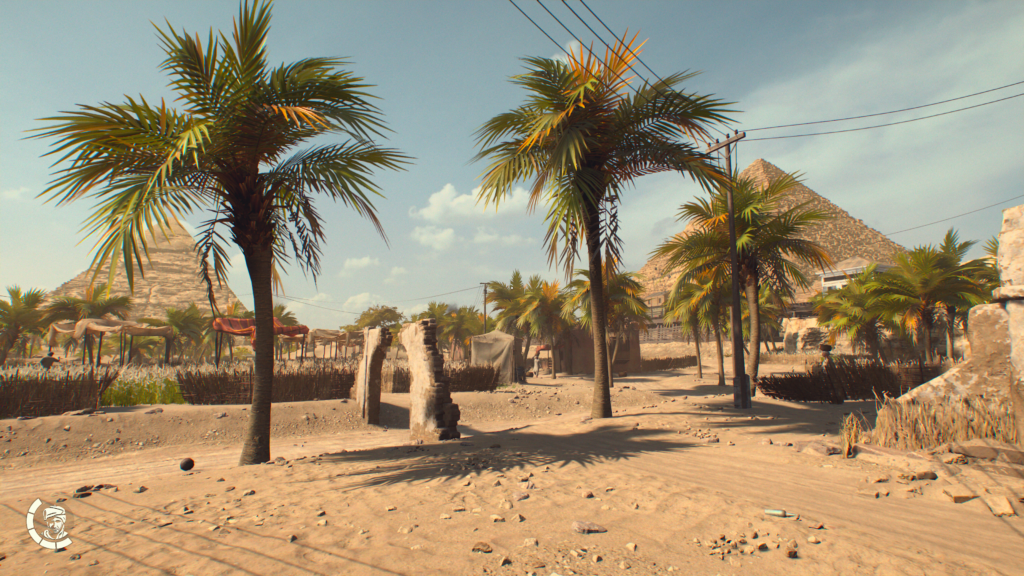
The graphics in Great Circle are beautiful and evocative. Indy himself is modelled accurately on a youthful Harrison Ford, and the other ‘main’ character models are generally well done. The generic opponents are of visually good quality but are repetitive.
Where the imagery of the game excels is in the large open area environments. The Vatican and Giza stand out, along with stunning moments that don’t screenshot well like the entry to the vault where Noah’s Ark is stored. The lighting in particular is brilliantly done in many places, with appropriate dust motes, smoke, shadows, and the like making the scenes come alive.
The voice acting is also tremendously good. Troy Baker provided the voice and motion for Indiana Jones and deserves great credit for making this iconic character come to life in the game. Enrico Colantoni also stands out as Father Antonio, Indy’s contact in the Vatican, as does Alessandra Mastronardi as Gina, Indy’s companion on most of the adventure.
Punching Nazis
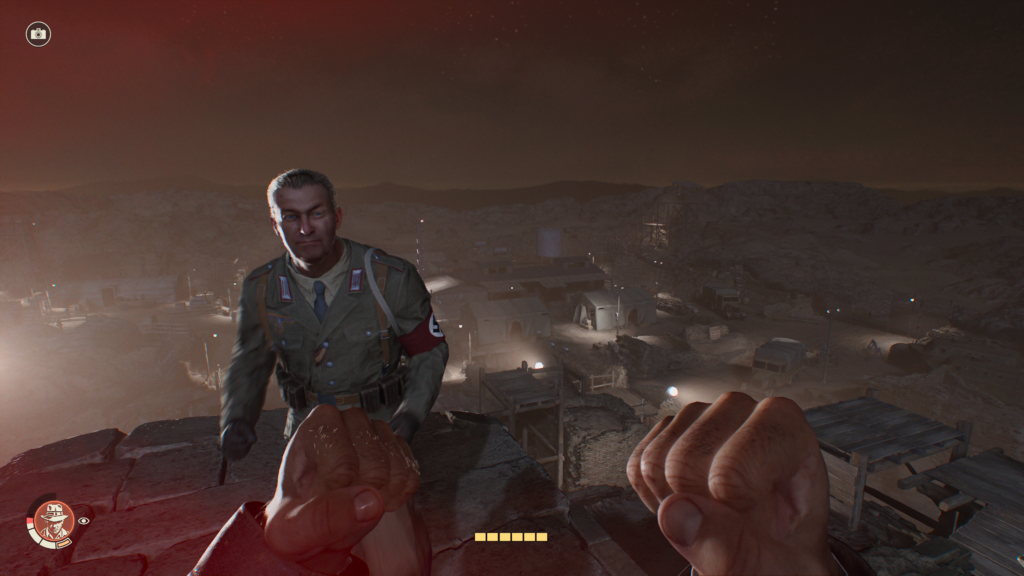
The combat is interesting but not what I’d call great. Indy has a pistol, a whip, and his fists, but most fights are fisticuffs. This puts Indiana Jones at a rather significant disadvantage in most if not all conflicts as there are usually multiple opponents who are often armed with machine guns and the like.
Note that Indy can pick up a dropped machine gun fairly frequently, but this is not a ‘permanent’ firearm: he will drop it if he has to climb or otherwise puts something else in his hands. Other temporary ‘environmental’ weapons like sledgehammers, shovels, and violins (?!) are available but break after a few uses. The whip can be used to disarm opponents, but the foes are nearly as strong or stronger than Indy himself. All in all, fighting is often a last resort.
The alternative to combat is stealth. Stealth generally works adequately, but I found frequent situations where getting where I needed to go required clearing the way of multiple foes. Enemies will spot you quickly and will both alert everyone nearby, in some cases entire camps, while aggressively confronting you. Indy himself is pretty fragile: a couple of bullets or a series of unblocked punches and down he goes. Healing is also quite slow involving wrapping a bandage around Indy’s arm: you still get hit while doing this, so healing mid-fight is generally a good way to die really fast.
My solution was my usual fallback: adjust the difficulty settings. Great Circle has a wide array of ‘Action’ (combat and enemy) and ‘Adventure’ (puzzle and quest) settings that can be tweaked. I played most of the game with ‘Action’ settings at ‘Light’ difficulty and ‘Adventure’ settings at ‘Moderate’.
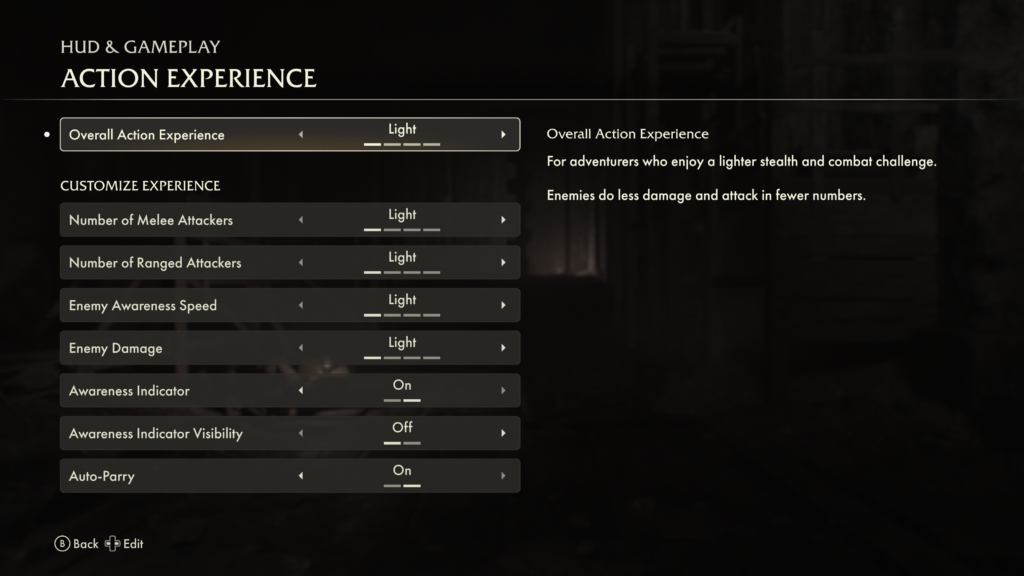
Even with the enemy difficulty scaled back significantly I still found it fairly easy to be overwhelmed. Even though I got reasonably good at blocking I still found Indy would die pretty quickly with two or more opponents. Thankfully, the NPC AI is a bit sketchy at times. With some careful stealth and quick running/hiding, I was able to ‘peel off’ enemies one or two at a time, then wait for the camp’s alert status to die down before taking the next couple.
And if I could find a nice choke point I could sometimes kill one enemy at a time, take their gun when they died, kill the next with that gun, then rinse and repeat. In one spot I took down at least a dozen Nazis in a row this way: although satisfying in the current times, it was also quite a quite comical indictment of the enemy AI.
Skills and abilities
Indiana Jones can gain skills and abilities in the game by reading ‘adventure books’ and paying ‘adventure points’. The books are found throughout the game, and the points are gained by completing quests and activities,
The abilities that can be gained include combat, defense, health increases, carrying capacity, and entirely new capabilities. One of my favourites was ‘Lucky Hat’, which is kind of a death’s door ability that gives you an extra chance when you are killed by foes.
Puzzles
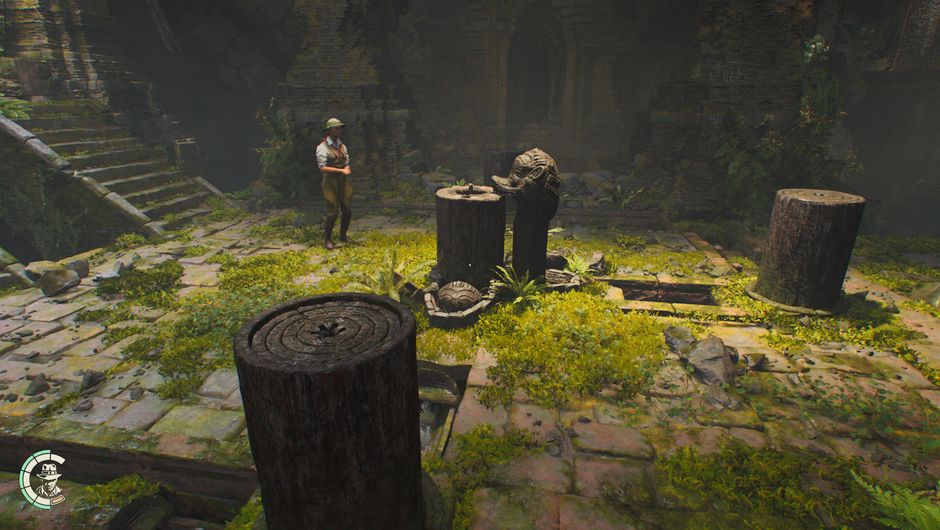
I like puzzles in games… puzzles I can solve, that is. Great Circle has two general classes of ‘puzzle’: the environmental navigation (‘platforming’) obstacles, and the intentional mechanical challenges. Both are generally quite well done, although a few of the mechanical challenges stumped me.
The navigation puzzles are generally pretty easy to work out. You need to get from point A to point B using hand holds, jumps, whip ‘targets’, and platforms of various kinds. Usually I found the path to be quite obvious, and I found them to be quite enjoyable for the most part.
The mechanical challenges are the more serious puzzles. Switches, levers, combinations, weight triggers, sun beams, gears, hydraulics: the variety in Great Circle is to be applauded. There is a hint system using Indy’s camera that gives a couple of extremely basic ideas for each puzzle that generally repeated what I had already figured out. But even the hardest puzzles I encountered were quite solvable. Yes, I consulted a couple of hint pages online, but in each such case I found that I was actually on the correct track: I had just come too impatient.
The only puzzles that stumped me were the ones involving a game board. One was a game called ‘Mak-Yek’ and the other involved rotating pieces. I definitely looked up the solutions for these, and I do not apologize for my weakness.
The whole is much better…
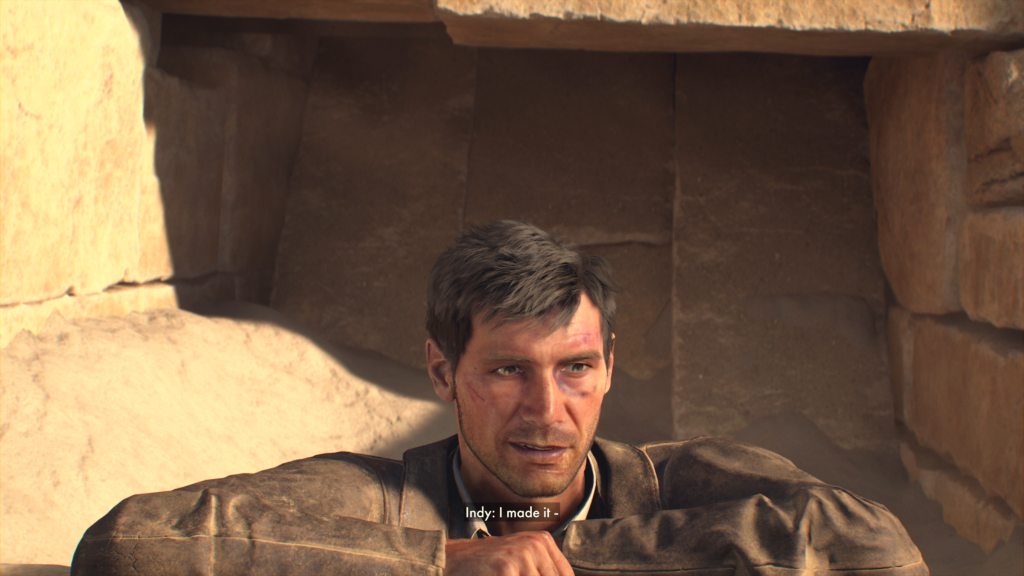
The Great Circle transcends its sometimes middling game systems to deliver an extraordinary story telling experience. Cut scene action moments blend well with the actual game play, interactions with NPCs are dramatic, and the ‘good enough’ gameplay is by no means an impediment. It really felt like personally experiencing an Indiana Jones movie myself, and on that basis is worth the price of admission.

Sounds like you played it exactly as I would. I was thinking about buying this for the PC but then discovered I could access it for £1 on Microsoft PC Game Pass. However, my current graphics card is just about good enough to run the game, due to the hardware-based ray tracing requirement. So for the present I’ve opted not to play and just watch some YouTube video footage instead.